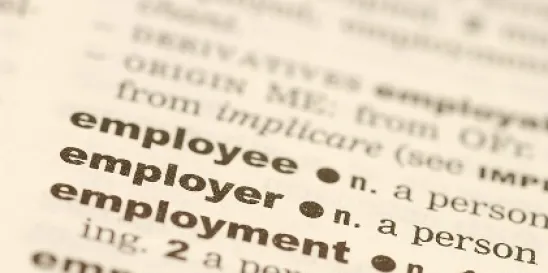On October 26, 2023 the National Labor Relations Board (“NLRB”) issued a final rule on when an entity may be considered a joint employer of a group of employees. The rule was first proposed on September 7, 2022. The new standard states, if each entity has an employment relationship with the employees, and the entities “share or codetermine” one or more of the employees’ essential terms and conditions of employment, then the two entities may be considered joint employers. Entities share or codetermine the terms and conditions of employment when the entities “possess the authority to control (whether directly, indirectly or both) or to exercise the power to control (whether directly, indirectly or both) one or more of the employees’ essential terms and conditions of employment.” Essential terms and conditions of employment are exclusively defined as:
-
Wages, benefits and other compensation;
-
Hours of work and scheduling;
-
The assignment of duties to be performed;
-
The supervision of the performance of duties;
-
Work rules and directions governing the manner, means and methods of the performance of duties and the grounds for discipline;
-
The tenure of employment, including hiring and discharge; and
-
Working conditions related to the safety and health of employees.
The NLRB describes the new standard as a return to “established common-law agency principles.” However, the main difference between the 2023 rule and the 2020 rule it replaces is how the NLRB will look at an entity’s control over the essential terms and conditions of employment. Specifically, the NLRB will consider an alleged joint employer’s authority to control the essential terms and conditions of employment—regardless of whether the entity actually exercises this control or if it is direct or indirect. Under the 2020 rule, a company had to both directly and actually exercise the control of the essential terms and conditions of employment.
For those who follow labor law, this will come as no surprise as the 2023 rule is very similar to the joint-employer rule issued under the Obama administration. This continues the contentious back and forth on the standard for determining joint-employer status that has occurred over the previous two administrations. Because of this new rule, the NLRB states it will be easier to find entities as joint employers by removing the previous rule’s “higher threshold.”
What Employers Need to Know
The NLRB establishing joint-employer status has significant labor consequences for a business. Joint employers can be required to collectively bargain with their joint employees, may be subject to labor picketing that would otherwise be illegal and unfair labor practices committed by one joint employer can be imputed to the other. Employers who will be affected the most include, but are not limited to, franchisors and franchisees, employers using temporary employees and employers who contract in labor for auxiliary support functions. Essentially, if you are an employer that has to frequently use another employer’s employees, this final rule could have a substantial impact on your potential liability.




 />i
/>i

